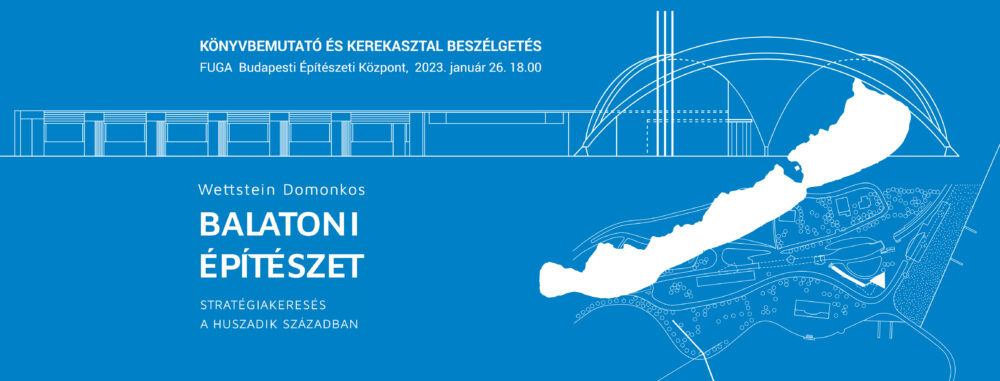BALATON ARCHITECTURE // book publication

// BOOK PUBLICATION
Domonkos Wettstein: BALATON ARCHITECTURE – Searching for strategy in the twentieth century
Domonkos Wettstein: Balatoni építészet. Stratégiakeresés a huszadik században. (with English summary)
BME Department of Urban Planning and Design / Tarsoly Kiadó, Budapest, 2022
ISBN 978-615-5858-28-4
Book design and graphics: Nóra Mészáros
https://www.facebook.com/balatoniepiteszet
https://www.instagram.com/balatoniepiteszet/
“How should we build on the shores of Lake Balaton?” – the question appeared more and more frequently in the publications between the two world wars, and then the establishment of the Balaton Management Committee (BIB) in 1929 gave the first opportunity for unified management and development. From that time on, architecture developed decisive positions in the regional development institutions, which greatly contributed to the uniform management of landscape, settlement and architectural scale issues. The focus of the planning history is the first Balaton Regional Plan, which defined the architecture of the sixties, and in 1965 won the Sir Patrick Abercrombie Award of the International Union of Architects (UIA). However, in order to understand the antecedents of the first regional plan and the subsequent changes and distortions, it is necessary to analyze the historical process of planning in a broader time frame.
The book is about the history of the architecture of the Balaton shore in the twentieth century. It primarily examines the regional-level concepts with which contemporaneous specialists, including Iván Kotsis, Tibor Farkas or Károly Polónyi, sought solutions to the problems of lakeside architecture. In addition to the analysis of model and type plans, the characteristic functions of recreational architecture illustrate the period’s developments. The experimental mentality of the designers is reflected in the easy design of seasonal waterside beaches, campsites, restaurants, and holiday and accommodation buildings. Their inventive structural design has become a trademark of modern architecture on the Lake Balaton. Although fewer and fewer memories of the heritage of the twentieth century remain, these seasonal waterfront buildings still live on in the public’s mind as a defining image.
